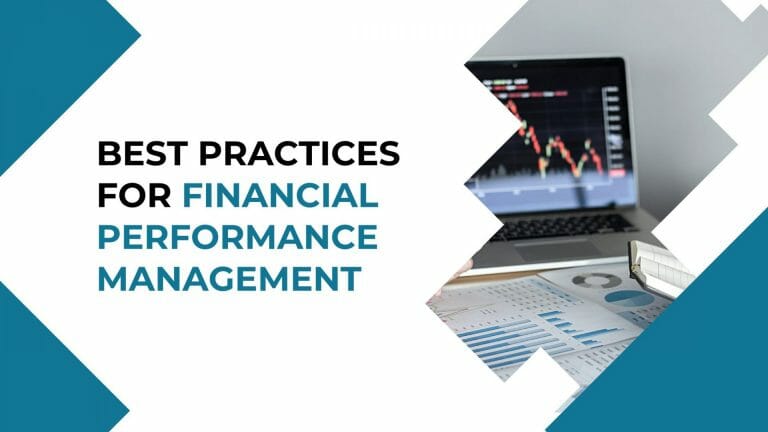We’ve all learned what I’m about to tell you in those Intro To Business classes that you took back in high school, but the end goal of a business is to be profitable or in layman’s terms, to make money after expenditures.
Obviously, there are other business goals that are engaged such as marketing goals (reaching X amount of people through mailings and phone calls, etc.), networking goals (promoting think tanks with other competitors within the same market), and retention goals (keeping clients while adding new ones, keeping employees and limiting turnover, etc.). But all of these ancillary goals are a means to an end as they all point the way to a profitable business.
The best way to monitor your end goal within business is to utilize FPM or Financial Performance Management practices. These FPM practices showcase ways that a business can keep tabs on where they’re heading in terms of the ledger. As with any other business tool, Financial Performance Management has many paths and methods to use under the FPM umbrella.
In this article, we will look at the best practices under Financial Performance Management methodologies. As the old saying goes, you have to learn to walk before you learn to run, so we’ll look at what makes FPM such a valuable tool for business and why it sets the foundation upon which you can build your house of Business atop of it.
Financial Performance Management – The Foundation
Ask any Construction Foreman about constructing a high-rise building or a residential house. The Foreman will tell you that it all starts and ends with the foundation, nothing else matters beyond that fact. You can build the most eye-catching dwelling in the city and have it collapse in no time flat due to faults within the foundation.
This same premise holds true within the scope of business and specifically, within the financial departments of a company. The finance departments (Payroll, Accounts Receivable, Accounts Payable, etc.) are in essence, the lifeblood of the business. Money comes in (revenue) and money goes out (expenditures) and the records and data of these transactions must be accurate and true. Businesses rely on this data to make prudent decisions on the future direction of the business in terms of major decisions.
In business, the best-made decisions are most often the best-informed decisions. Accurate and Up-To-Date Data will provide in almost all cases the best information to base a business decision upon. Think of some businesses where the profit margins are razor-thin such as grocery stores and retail stores. When the business is dealing with fractions of a percentage point within tolerant ranges of profit, every bit of data helps. Depending on the size of the business, fractions of a percentage point could mean the difference between a profitable quarter and a failing quarter. So what makes good Financial Performance Management practices for the business? We will look at a few methods below that will shine a light upon this misunderstood subject.
Data Accuracy
As previously mentioned, the accuracy of data is paramount to the success of your FPM goals. Many businesses utilize a double-handed approach to data access by using software to mine data at all times and to have bookkeepers on staff to provide a manual underwriting of the data that needs to be monitored on a daily basis. This provides the business with the information that they need on-hand at a moment’s notice and it also provides a required “check” to what’s being inputted into the software entries upon initial transaction notation. The data is then compiled into financial statements that we are familiar with such as Balance Sheets, Income Statements, Cash Flow Statements, and others.
Related : Importance of Statement Of Operations in a company
The importance of being accurate with the record keeping is self-evident as a business can’t make accurate decisions with inaccurate information.
Scalability
The accuracy of data dovetails neatly into this next component of Financial Performance Management and that is the ability to rise and fall within the scope of what your business can handle or scalability.
You’re not going to see a brand-new mom & pop gas station shooting for the moon and expecting to open ten locations within the next few months. Those kinds of ideals and expectations are admirable, but extremely foolish and unrealistic. Under ideal circumstances, that small gas station will work extremely hard to retain a customer base and slowly over time expand their marketing scope to garner new customers while retaining the base that they have. Over the scope of three to five years, when the customer base is large enough to not only support the business but also provide enough profit to support a second similarly-sized business, then opening up a second location would be a prudent decision.
That’s scalability in a nutshell, the business needs to learn to roll with the punches and know when to ramp up expectations and that information can be found on the very data that’s been discussed within this article. For instance, if the business has a lot of demand for the product and not enough supply…the business will need to ramp up supply to meet the demand. These supply and demand decisions can be ramped up or down depending upon current market conditions and to a smaller degree, market trends. The best course of action for a business is to slowly scale their business upwards to match the growing demand for their product. But, in times of market downturn such as a recession, the business must scale their business downwards to match current market conditions as a means for business survival. The business must still be “in the game” to have a chance to catch the market in the inevitable upswing and correction.
Data Analyzation
Analyzing the data that’s required in Financial Performance Management is a job that falls under the “double-handed” approach that’s mentioned earlier. Manual notation and inputting of the data into bookkeeping software are two approaches to data analyzation that work well with each other. Data Analyzation creates the possible paths and decisions that a business finds themselves facing at important forks in the road. Should the business downsize their staff? Should a business pour more focus on Marketing next quarter? Should the business raise prices on their product to make up for a shortfall within a different department? These are all questions that can be answered with proper data accuracy and proper data analyzation.
Simplification
It goes without saying that keeping things simple will provide the best results within Financial Performance Management methodologies. The famous acronym K.I.S.S. (Keep It Simple, Stupid) has been around for ages and for good reason! The FPM methods that are used should be available and usable for everybody in the office and not just a select few or a specific department. This ease-of-use will pay off in the long run due to the fact that everyone can input data within FPM software if the interface is easily learned, retained, and teachable to others. This very fact will cut down on man-hours and labor needed to input important data within the interface. No more gigantic boxes of manila folders filled with transactions that need to be inputted by a small team of five or six accountants and no more time crunch every three months for quarterly financial statements.
The Bottom Line
The big takeaway from Financial Performance Management techniques is that they provide a blueprint on keeping an eye on business and providing possible ways forward to improve the business. Not utilizing FPM methods within the scope of your business is akin to traveling down a dark path or street with no lights to illuminate the journey. Lamps and Lights have been around now for 150 years and it’s high time that every business heeds this fact and takes the proverbial lamp with them with FPM methodologies.
‘



